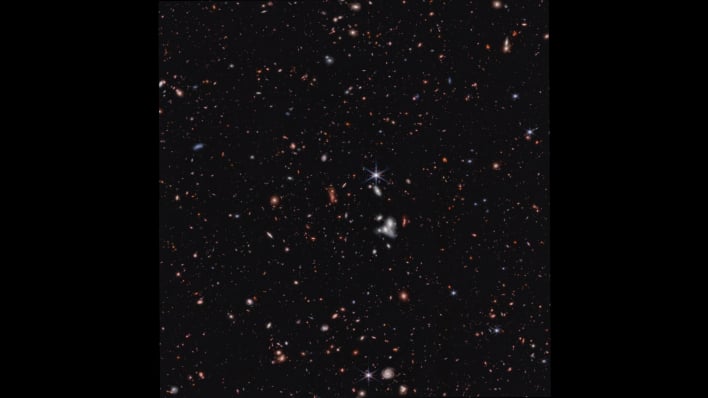NASA's Webb Telescope Discovers The Most Distant Active Supermassive Black Hole Ever

The images that were collected by JWST and stitched together in a panoramic view are part of Webb's Cosmic Evolution Early Release Science (CEERS) Survey. The unique program takes Webb's extremely detailed near- and mid-infrared images and data known as spectra. NASA indicated that all of these were utilized to make these new discoveries.
CEERS 1019 weighs in at about 9 million solar masses, far less than any other known black hole in the early universe. In comparison, the other known black holes typically come in at more than 1 billion times the mass of the Sun. CEERS 1019 is actually more similar to the black hole at the center of our own Milky Way, which is 4.6 million times the mass of the Sun.
Researchers said that CEERS 1019 existed so much earlier that it is much more difficult to explain how it formed so soon following the beginning of the universe. They also say that the supermassive black hole may not be the record holder for the most distant for long, as there are other black holes that have been identified by JWST that are currently being reviewed by the astronomical community.
"Looking at this distant object with this telescope is a lot like looking at data from black holes that exist in galaxies near our own," explained Rebecca Larson of the University of Texas Austin, who led the discovery of CEERS 1019. "There are so many spectral lines to analyze," she exclaimed.
CEERS team member Jeythan Kartaltepe of the Rochester Institute of Technology in New York remarked, "We're not used to seeing so much structure in images at these distances. A galaxy merger could be partly responsible for fueling the activity in this galaxy's black hole, and that could also lead to increased star formation."
The CEERS program is expansive, according to NASA, and there is still much more to explore. Team member Pablo Arrabal Haro of NSF's NOIRLab summed up the recent findings of Webb stating, "I am overwhelmed by the amount of highly detailed spectra of remote galaxies Webb returned. These data are absolutely incredible."



